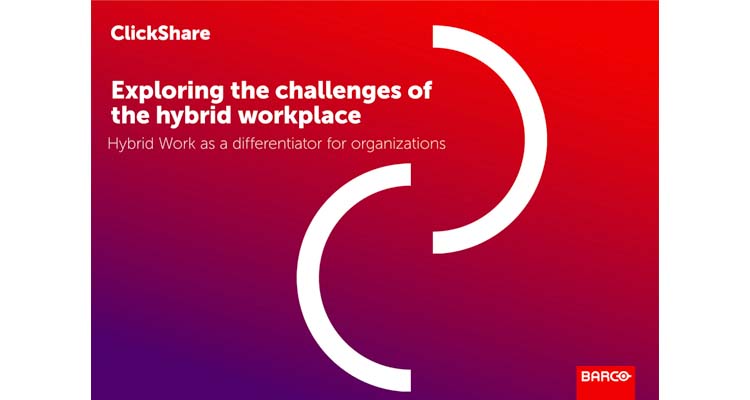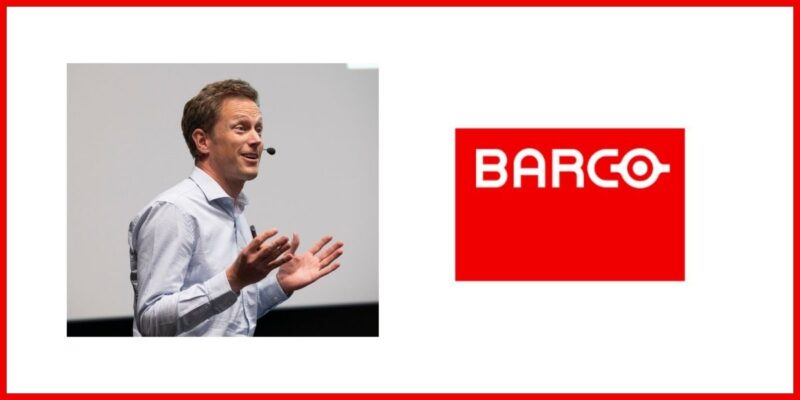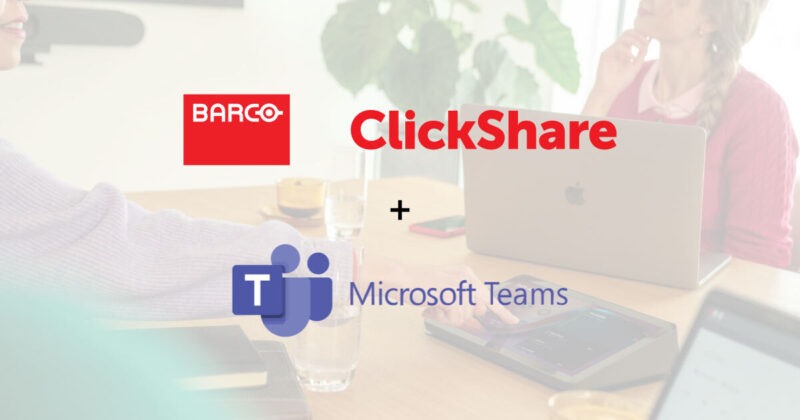Barco ClickShare Survey Finds 35% Of Workers Have Trouble Engaging in Hybrid Meetings
According to Barco, hybrid work (defined as some type of flexible corporate environment that enables employees to operate both remotely and in a physical office) is now a permanent professional fixture. Workers have come to expect new levels of flexibility due to this new phenomenon. However, employees now demand even more from their hybrid work experience — namely, greater meeting equity.
Simply defined, meeting equity ensures that remote employees receive the same level of engagement, collaboration and access to a meeting room experience as those who are physically seated around the table. As a new Barco ClickShare survey found, hybrid workers are growing more concerned about perceptions of unequal and less productive meeting experiences while apart from their colleagues, and many are going as far as to consider new opportunities at organizations where they believe they will be more included.
After nearly two years of familiarity with remote and hybrid work, the Barco ClickShare Hybrid Meeting Survey found that more than one-third (35%) of workers still have trouble fully engaging during hybrid meetings. A significant source of this disconnect emanates from a perception of oversight, as 28% find it difficult to have their voices heard when joining hybrid meetings from an offsite location. Twice as many remote hybrid participants (56%) likewise feel that meeting leaders cater too heavily to those in a physical meeting space when conducting the conversation.
“While our ClickShare Hybrid Meeting Survey clearly indicates that the majority of workers (80%) prefer the hybrid model, 71% still struggle with the frictions and technical challenges that come with hybrid engagement,” said Lieven Bertier, segment marketing director, Workplace at Barco. “Hybrid meetings have become the mainstay of professional collaboration, and this data spotlights an ideal opportunity for businesses to remove access barriers for remote participants and ensure that all employees feel they can perform their best from any location.”
Compiled in late 2021, the ClickShare Hybrid Meeting Survey reflects the attitudes and preferences of modern workers as business leaders adjust operational models, workspaces and organizational cultures in alignment with evolving professional dynamics. Featuring input from almost 4,000 global workers across varying occupations and locations, the survey also captures the technical, functional and emotional complications that have emerged across the broader hybrid work transition.
Technical Frustration: A Gateway to Resignation?
As Barco uncovered, nearly three in four workers (71%) say they still struggle with joining and navigating hybrid meetings. However, these technical frustrations now appear to have a greater impact on their professional satisfaction and are potentially motivating them to explore new opportunities. Nearly one in three (30%) workers say they will consider a job offer from another company with a well-defined hybrid policy, which includes clear guidelines and tools for successful and efficient hybrid meeting participation.
“Our survey reiterates that as employees’ appetites for functional hybrid work continue to grow, working conditions now are just as important as salaries in attracting and retaining the best workers,” said Bertier. “For business leaders, successful hybrid work begins with establishing a formal policy — which we were surprised to learn that 60% of organizations still do not have — but also includes making investments that drive engagement and give employees the leverage and tools to work wherever and however they like. These conversations and strategies will only grow in importance as businesses develop and execute their return-to-office plans.”
Working to See and Be Seen
Barco found that the return to on-site conference rooms isn’t without its own pains. More specifically, employees are still working to replicate the flexible and convenient meeting experience they’ve enjoyed while remote. Though 85% of businesses have at least one dedicated video conferencing room in their space, only 39% of IT managers feel these rooms are adequately prepared for a BYOM style of work. As a result, nearly two in three (65%) workers have trouble mastering the differing connectivity points and laptop compatibility variables of their office’s video conferencing rooms.








